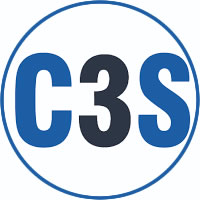1. Encourages learning-by-doing pedagogy
Smaller class sizes allow teachers to undertake more pragmatic way of teaching in the classroom. “With this pedagogy, the role of a teacher changes from an information dispenser to a co-explorer of knowledge.”
Students may share their ideas, improve their communication skills, and learn how to solve problems via group projects. Students learn how to apply the ideas they’ve studied in class to real-world business issues through internships and real-time assignments.
We believe in student engagement at C3S Business School.
We promote class discussions, and presentations contribute to a chunk of a student’s assessment. We also organize periodic professional visits to national and international organizations in addition to what unfolds in the classroom.
2. Equal attention
Individual learners are more apparent in smaller classrooms, and professors may dedicate more attention to each one. Professors will be able to evaluate each student’s aptitude and pace, and modify their pedagogy to ensure that the entire class holds intact and is involved.
Smaller classrooms can also motivate learners who may be introverts, to speak out and communicate their opinions during group discussions.
3. Increased scope of tête-à-tête
With fewer students in the classroom, professors have more time to connect with students individually, as we’ve observed. This improves the student-teacher relationship, which is effective for teaching since it encourages students to be more candid and the professor to be more engaged.
A healthy and honest relationship with the professors results beneficial in a lot of ways. For instance, students can seek assistance on career aspects, the scope of their field, and tips on landing a good opportunity for their accelerated growth post their studies.
4. Higher student participation
Students in small, interactive classrooms have the chance to:
- Ask questions as they occur, and the professor will respond right immediately; if there is still something they don’t understand, they can ask follow-up questions.
- They can share their views and ideas and obtain feedback from their classmates and the professor.
- Contribute to their friends’ learnings.
As a result, the entire class has a better understanding and is more focused.
5. Facilitates interactive learning
While lectures may be presented to large lecture halls with hundreds of students, having an interactive conversation with such a huge audience is nearly impossible. This is where the benefits of smaller class sizes truly shine. Lectures are an excellent approach to provide an overview of a subject while also conveying facts and theories. The interactive learning approach, on the other hand, is just as beneficial since it allows students to voice their perspectives on industry needs and understand what their peers have to say.
At C3S Business School, we believe in a mix of lectures and interactive teaching. Our method is fundamentally based on the assignment study method and encapsulated by seminars, debates, group discussions, and other activities that help students to apply what they’ve learned in class to real-world business situations. We routinely ask experts to
interact with our students and provide their perspectives on latest industry developments in their respective fields.
6. Rapport building and sharing a bond
Smaller classrooms allow students to get to know their classmates on a more personal level. As students get more familiar with one another and feel confident enough to offer their thoughts, this helps to establish a highly synergetic and symbiotic classroom environment.
At an international business school like C3S, this kind of environment allow students to connect with classmates from various countries and cultures, allowing them to develop a global perspective on significant international business challenges. Our school community is populated by people from more than 27 nationalities, and each one speaks at least three different languages.
We acknowledge the substantial advantages of small classrooms for students at C3S Business School. For the very reason, we like to keep the class size small: to optimize engagement between students, professors, and classmates, and to provide them with a better opportunity for achieving educational excellence.
Explore our website or download our brochure or contact us to learn more about life at C3S.
The C3S Admissions team experts will be happy to assist you.

Written By:
Pooja Shah is the Head of Digital Content and Engagement at Barcelona's C3S Business School. She has over 12 years of international experience in the field of education, with a diverse portfolio of roles. She is the driving force behind the school's digital content on its website and social media platforms. She went on to get her MBA with a specialty in Human Resources after excelling academically in her Bachelor's in Computer Applications. Her passion is to educate and inspire the humanity, thereby contributing her bit to the society.
Share This Article




